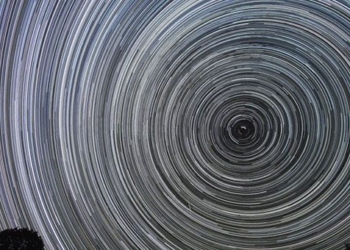Amidst the rugged peaks of the Rocky Mountains in Alberta, Canada, a captivating natural phenomenon unfolds each winter at Abraham Lake, transforming its vast frozen landscape into an enchanting tableau adorned with thousands of delicate ice bubbles.
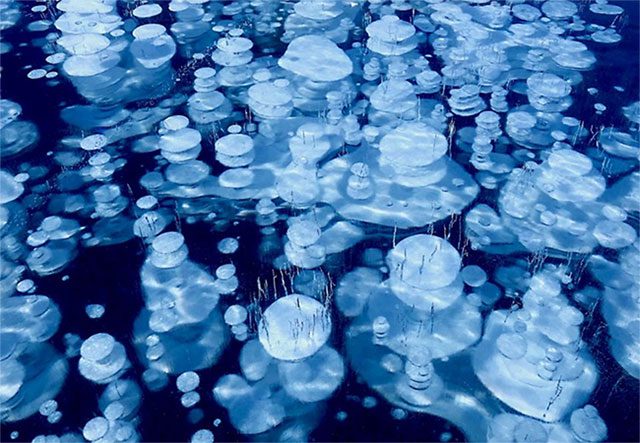
Abraham Lake stretches approximately 33 kilometers between the Kootenay Plains and Nordegg, a ghost town located in Alberta’s Bighorn region. In winter, the only road leading to this artificial lake is through the David Thompson Highway, likely named after the intrepid explorer who mapped much of Western Canada.
Nestled within the snow-covered landscape of the Rocky Mountains in Alberta is Abraham Lake, a reservoir renowned for its unique and mesmerizing phenomenon – frozen bubbles. As winter descends, the lake transforms into a captivating painting, decorated with thousands of small white bubbles trapped in the crystalline ice.
The origin of these ice bubbles can be traced back to the lake’s bottom, where organic materials are decomposing, primarily plants and branches, as well as animal remains, releasing methane gas. As the water temperature drops, the methane, being lighter than water, rises to the surface, forming a network of bubbles encased in the solidified ice, creating a surreal scene of spheres and white patterns.
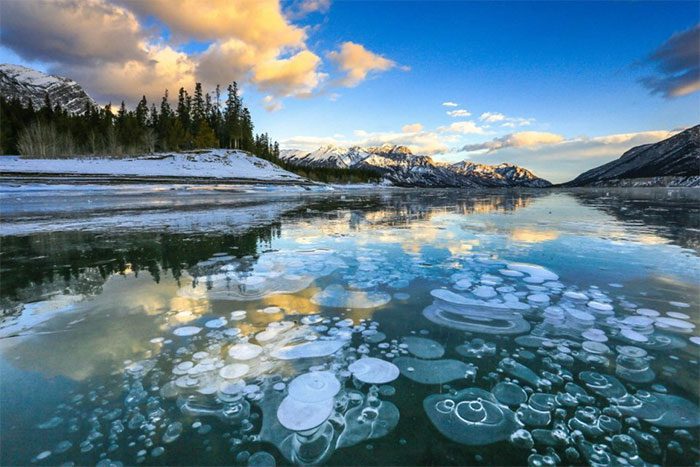
During the winter months, temperatures around Abraham Lake can plummet to extremely low levels, and wind speeds can reach up to 48 km/h. The frigid winds continuously sweep across the lake, keeping the ice on the surface as clear as crystal, revealing a window into the surreal beauty below: the frozen methane bubbles.
The best time to witness this natural spectacle is from mid-January to early February, when the bubbles are at their peak. At this time, the thickness of the ice allows visitors to safely walk on the lake, getting a close-up view of the shimmering bubbles beneath their feet.
The wind also helps to blow snow off the ice, making the bubbles more visible. However, one must always exercise caution when venturing onto the ice, as its thickness and stability can vary depending on the location and weather conditions.
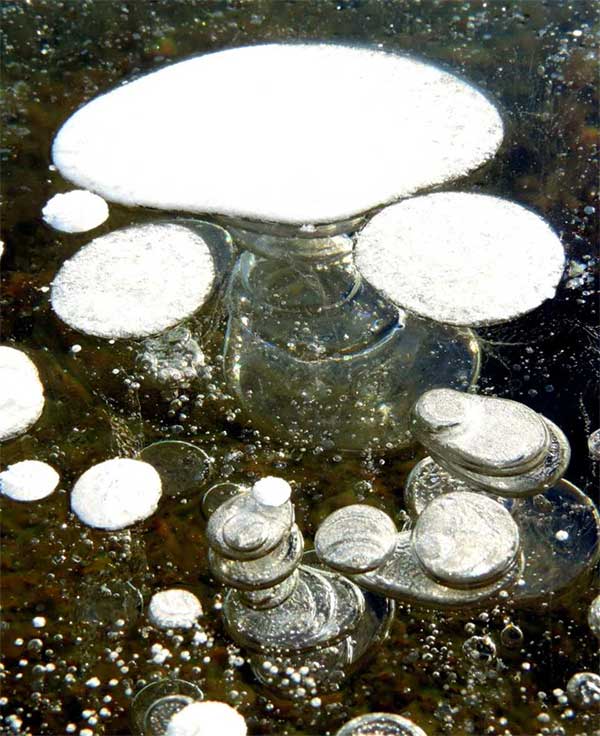
Like many other lakes around the world, Abraham Lake releases methane year-round. However, in winter, this biological process can create astonishing visual phenomena. As bacteria beneath the lake digest decomposing organic matter, they emit large amounts of methane gas that bubble up to the lake’s surface.
The frozen bubbles at Abraham Lake are not just a visual “treat”; they also play a crucial role in the lake’s ecosystem. The methane trapped in the bubbles serves as a food source for bacteria and other microorganisms, contributing to the lake’s biodiversity.
To experience the frozen bubbles of Abraham Lake, you first need to follow the only road into Abraham Lake, the David Thompson Highway (H11), and then drive to the Preacher Point lookout, located at the southern end of the lake. From there, you can venture onto the ice, carefully following the designated path and avoiding areas with cracks or thin ice.
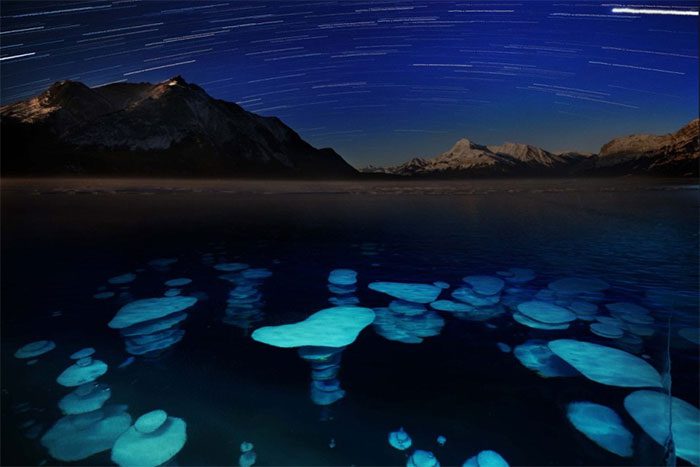
When exposed to colder temperatures on the lake surface, the bubbles freeze into shimmering pillars and round milky bubbles. Thanks to the unique transparency of the ice surface at Abraham Lake, this spot has become a popular destination for visitors from all over to photograph the methane bubbles beneath. Beyond the beautiful bubble structures of methane below the lake’s surface, the pristine icy surface, regularly polished by winter winds, is as stunning as a work of art.
Places where you can see the frozen bubbles include Windy Point and Hoodoo Creek. These sites offer breathtaking views of the lake and the surrounding Rocky Mountains. You can also join guided tours or rent ice skates and other equipment from local outfitters. However, be careful not to break or ignite the bubbles, as they contain flammable gas that can be harmful if inhaled or exposed to fire.
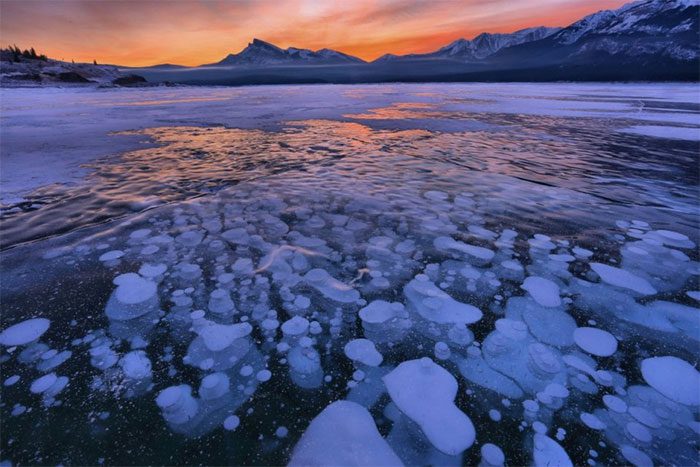
Scott Zolkos, a PhD candidate at the University of Alberta, has dedicated considerable effort to studying the phenomenon of permafrost thawing in freshwater – a phenomenon that can lead to increased methane levels in the Earth’s atmosphere. Although Abraham Lake is not located in a permafrost region, measuring the methane levels beneath the lake’s surface can help understand how this lake will impact climate change. For Scott Zolkos, the serene landscape around the lake is the perfect backdrop for his research: “One of the great things about science is that the door is always wide open for you to seek something interesting and unexpected.”
A winter visit to Abraham Lake is sure to be an unforgettable experience, offering a glimpse into the wonders of nature and the delicate balance of the environment. The frozen bubbles, like tiny sentinels of the lake’s ecosystem, remind us of the connection between life and beauty that emerges even in the harshest conditions.









































